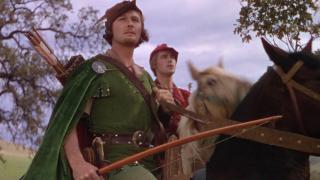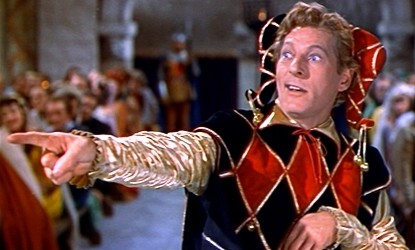For IS 201 I took a film class. In that class we focused more on the deeper meanings in films and the symbolism used throughout them. So, I enjoyed having a different focus for this film class. I was a little nervous that I would not like the films we would be watching since I don’t particularly like older “classics”. After learning that our main focus would be on Medieval films though, I became a little more optimistic because I figured the films would have a little more action.
It was interesting to view the different representations of the middle ages because I am so used to associating that time period with the “knights in shining armor” stereotype. I think watching this variety of films helped change my view on the middle ages so that it’s not so bogged down by the Hollywood glamour. Now when I watch films, I look for things such as historical factors and the impacts the representations have on the public.
After taking this class, it’s easy to see where the common stereotypes emerged. Media plays a big role in society nowadays, so the elements of history portrayed on screen become entwined in society, especially when films target younger audiences. Kids are more susceptible to believing everything they see on screen. So if a film shows knights and dragons in the same time period, kids will associate those two things.
My favorite film from this class would probably have to be Court Jester. I liked its elements of comedy. Usually if a movie or show can make me laugh out loud, it tends to end up on my list of movies that I like and I would definitely recommend a friend to watch it.



 How to Train Your Dragon (2010) is a children’s film that tells a tale about Vikings and the lives they live. In this film, that life consists of defending their village from the dragons that ravage their land. The main character, Hiccup, is a young Viking who doesn’t quite fit in with everyone else and as son of the chieftain, life is made much harder. His life only gets more difficult when he catches a dragon but can’t seem to do what the others would do, kill it. While this only makes his social situation more difficult, he actually learns a lot from his time with his new friend and is able to save his village indefinitely from the threat that looms over them.
How to Train Your Dragon (2010) is a children’s film that tells a tale about Vikings and the lives they live. In this film, that life consists of defending their village from the dragons that ravage their land. The main character, Hiccup, is a young Viking who doesn’t quite fit in with everyone else and as son of the chieftain, life is made much harder. His life only gets more difficult when he catches a dragon but can’t seem to do what the others would do, kill it. While this only makes his social situation more difficult, he actually learns a lot from his time with his new friend and is able to save his village indefinitely from the threat that looms over them.